Tomar, a Templar City
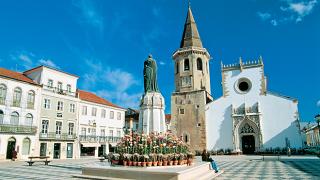
Don't miss
- visit the Convent of Christ
- walk around the Sete Montes Woods
- visit the old synagogue
- enjoy the Fatias de Tomar
- visit the city in a year when the Tabuleiros Festival is taking place
- go to Almourol Castle
Former seat of the Order of the Knights Templar, Tomar is a city of great charm for its artistic and cultural wealth, whose greatest expression is in the Convent of Christ, one of the chief works of the Portuguese Renaissance.
Whatever your reason for visiting the city, climbing up to the Templar castle and discovering the monumental work of the Convent of Christ is a must. The Charola (Rotunda) is the oldest part. This Templar chapel was built in the 12th century, like the castle, which was at the time the Kingdom’s most up-to-date and advanced military set-up, inspired by the fortifications of the Holy Land. It was converted into a Chancel during the restoration works ordered by King Manuel I in the 16th century, when the complex gained the architectural splendour, kept intact to this day, which earned it World Heritage Site status.
It’s worth visiting the Convent at length to discover some of its precious details, such as the depictions on the Renaissance portal, the unique symbolism of the Manueline Window in the Chapter Hall, the architectural details in the Main Cloister and the spaces connected to Templar rituals. To better understand its history, it’s important to know how the Order of the Knights Templar became the Order of Christ, upholding their power, knowledge and wealth in Portugal. The famous Henry, the Navigator, the mentor of the Discoveries, was one of its most important governors and protectors.
From the Convent, you can walk down through the Sete Montes Woods to the historic centre. Halfway along the road, you will see the Nossa Senhora da Conceição Chapel, a small Renaissance jewel by João de Castilho, a Portuguese who also worked in the Convent.
Then you must visit Tomar. The oldest mediaeval urban area has a cross-shaped layout, orientated along the points of the compass, with a convent at each end. The Praça da República, with its Main Church dedicated to St. John the Baptist, marks its centre, with the Castle hill and the Convent of Christ to the west. The surrounding streets are lined with traditional shops, including the oldest café where the delights of the local pastries can be appreciated: almond and squash queijadas (cheese cakes) and the traditional Fatias de Tomar (Tomar slices) made with just egg yolks and cooked in a bain-marie in a very special pot, invented by a local tinsmith in the mid-20th century.
To the south is the Convent of São Francisco, where you can visit today the interesting Museu dos Fósforos (Match Museum), and to the north the former Convent of Anunciada. To the east, on the site of the current Museu da Levada, you can see the old mills, powered by the River Nabão which crosses the city. On one of its banks is the Convent of Santa Iria, and a little further along, the Church of Santa Maria do Olival, which houses the tombs of several Knights Templar, including that of Gualdim Pais, the first master, who died in 1195.
The whole town expanded from this core, which is also the setting for one of the chief traditional events, the Tabuleiros Festival.
Tomar has not only witnessed the fighting of the Christian Reconquest in the 12th century, but also preserves an interesting testimony to the Jewish religion, in the old 15th century Synagogue, currently the Abraão Zacuto Luso-Hebrew Museum, devoted to this distinguished 15th century astronomer and mathematician. Located in the former Rua da Judiaria, it contains a valuable documentary and epigraphic collection. Note the holes at each corner which were used to place earthen jugs on the wall in order to improve the acoustic conditions of the house.
Besides the above points of interest, there is also the Centre for Contemporary Art which houses the collection of one of the most important Portuguese art historians of the 20th century, Professor José-Augusto França.
For a rest from the cultural tour there’s nothing better than a break in Mouchão Park. This is a cool place where you can see the Mouchão Wheel, a wooden water wheel, which is a landmark of the city and evokes the time when mills, oil presses and farmland along the river all contributed to Tomar’s economic prosperity.
But there are reasons for further visits in the vicinity, such as Castelo de Bode, one of the largest reservoirs in the country, where you can go on a pleasant cruise with lunch on board, or choose from a wide range of water sports, as well as the islet on the River Tagus where Almourol Castle is located, or the riverside town of Dornes for those who seek a better knowledge about the region’s Templar sites. For a more complete itinerary, we suggest the “World Heritage Tourist Routes - “At the Heart of Portugal”.







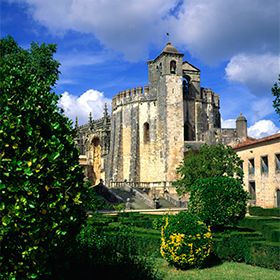


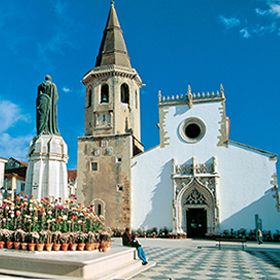
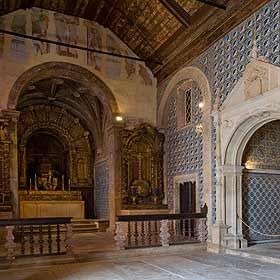

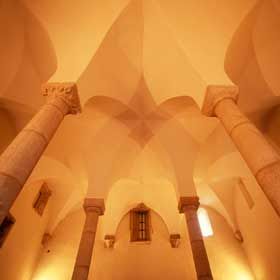
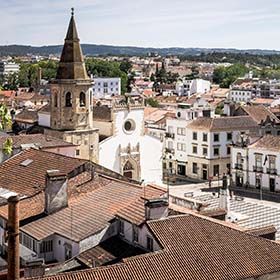
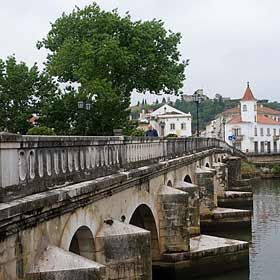

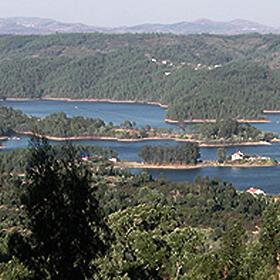
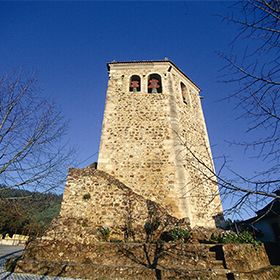
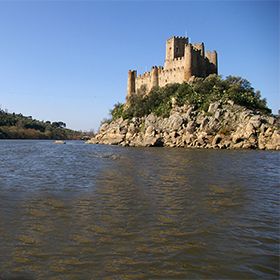

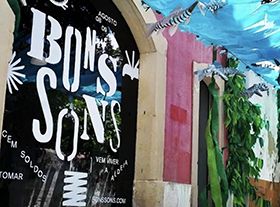
 Explore
Explore 
 Remember and Share
Remember and Share 


